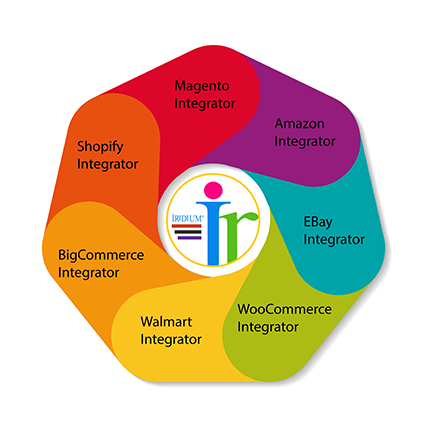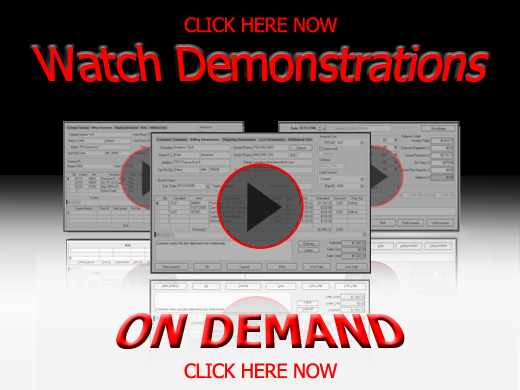For More Information

The Business Solution for Inventory Management
-
Key features in the Inventory Management solution include:
- When you have a state-of-the-art Inventory Management system, you can accurately track your assets, minimize loss, and know “where you are at” at every point in your business process—from purchasing and receiving items from the original vendor and knowing their arrival condition, to an efficient and organized warehouse, through the sales channels, and the final delivery to the customer.
- When adding new inventory items to the system, the IRIDIUM tool records detailed information for each new item, including: the unique item number or SKU, a text description for the item, the user-definable item type, the sale amount, suggested retail and corporate prices, item weight, and the primary (original) vendor.
- Additional attributes (such as size and color) may be stored in the system and linked/attached to the item. Default selections for printing item tags and specifying re-order points, re-order quantities, and cost adjustments are also available from within this function of the tool.
- Tracking serial numbers at every point of transaction provides a trail of how, where, and when each item was moved between the original vendor and the delivery location. Serial numbers show there the item was received and when it was sold and delivered.
- In tracking this information, the tool may be configured so that the serial number must be entered at the time of customer possession. A reminder to collect this information is printed on the invoice or delivery ticket, instructing the delivery person to manually record the serial number on the document.
Inventory Costing

Costing of inventory within the system is calculated on an average cost basis, either by location or across all locations. When inventory is purchased, the total value of the inventory on the purchase order is added to the total value of the items currently in inventory. This total value is then divided by the total number of units and generates a new average cost value.
Inventory History

Keeping a detailed account of inventory that passes through each retail and warehouse location, the tool can automatically tell you how much inventory is on hand, how much has been allocated (or “reserved), and what quantities of inventory is currently on order. This information may be further broken down on a date-by-date and case-by-case basis
Barcode Information

As items are purchased in a retail location, scanning the item’s barcode or UPC symbol is at the point of sale helps to track inventory within. Varying information that is contained (programmed) within the barcode or UPC symbol triggers the Inventory tool to automatically populate sales orders that are already preconfigured within the system
Merchandise Transfer

Inventory can be transferred from one location to another by creating a merchandise transfer within the tool. Transfers can be created from any location, regardless of the inventory’s origin. All transactions affecting inventory are automatically recorded within the tool, including the details of the traction and the individuals responsible for completing the transaction.
Mobile Devices

Costing of inventory within the system is calculated on an average cost basis, either by location or across all locations. When inventory is purchased, the total value of the inventory on the purchase order is added to the total value of the items currently in inventory. This total value is then divided by the total number of units and generates a new average cost value.
Multi Channel Integrations

As items are purchased in a retail location, scanning the item’s barcode or UPC symbol is at the point of sale helps to track inventory within. Varying information that is contained (programmed) within the barcode or UPC symbol triggers the Inventory tool to automatically populate sales orders that are already preconfigured within the system

